TL;DR
➡ Hair Transplant Trypohobia probably comes from our ancestors’ evolutionary response to venomous animals with many holes. Another hypothesis is the avoidance of skin diseases of others which
➡ Another view suggests that this trait evolved to avoid people with skin diseases that manifest as frequent and numerous spots on the skin.
➡ Trypophobia is not an obstacle to having a hair transplant. However, stress management is necessary as your mental state highly affects how well your scalp will accept the newly transplanted hair.
➡ There are many medications for easing your mind from excessive stress that phobia can cause without affecting your hair’s health.
➡ Even better, more modern techniques such as DHI or Sapphire FUE create less visible holes on your scalp and have a faster recovery time.
➡ Even if I don’t perform FUT hair transplants and generally do not recommend it to my patients, FUT surgeries can be a solution to hair transplant trypophobia since the technique does not cause holes in the back of the head.
Do you feel disgusted, anxious, and scared when you see a bunch of small holes clustered?
Scientists think that it stems from our ancestor’s trypophobic reactions against venomous animals which possess patterns resembling many holes clustered together.
Does even seeing a strawberry photo make you feel uncomfortable?
Ok, then you might be trypophobic and automatically hair transplant trypophobic.

Don’t worry, you are not alone. The National Institute of Mental Health estimates that 12.5% of adults in the United States experience a phobia at some point.
So, in this article, I’m going to cover:
- What Is Hair Transplant Trypophobia?
- Hair Transplant Trypophobia Pictures
- How Do You Ensure That Your Hair Transplant Is 100% Successful?
⚠️ From the 2nd section and on, the article includes some trypophobic pictures. Please continue accordingly. ⚠️
Table of Contents
What Is Hair Transplant Trypophobia?
Trypophobia is fear or aversion to clusters of tiny holes. It is NOT considered a mental disorder by the American Psychiatric Association’s Diagnostic and Statistical Manual of Mental Disorders.
A study says that even if the reasons for trypophobia are not clear, the aversion to small holes somehow is a survival instinct preparing the person against the danger of a wild animal, parasites, or infectious disease that might come out of holes.
Hair transplant trypophobia is an autonomous nervous system response to the look of small holes in the donor site where the micro-punch device is applied and the incision site where the extracted grafts will be placed.
In a Follicular Unit Extraction (FUE) procedure, the surgeon uses a micro-punch device (0.8 mm or less in diameter) to extract hair follicles from the side or back of the head. This process opens very tiny scars/holes in the application zones.
If you have hair transplant trypophobia, you can feel discomfort by looking at these holes in front of the mirror.
Thus, hair transplantation may trigger trypophobia.
However, this does not mean trypophobics can’t get a hair transplantation operation. It can be overcome with the help of an experienced hair transplant surgeon employing the right patient stress management methods.
Don’t worry, you’ll never feel alone at my clinic if your hair transplant trypophobia is triggered 👊
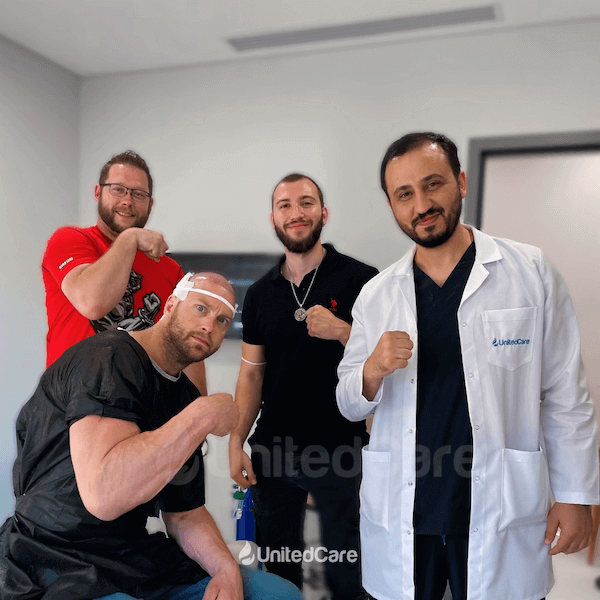
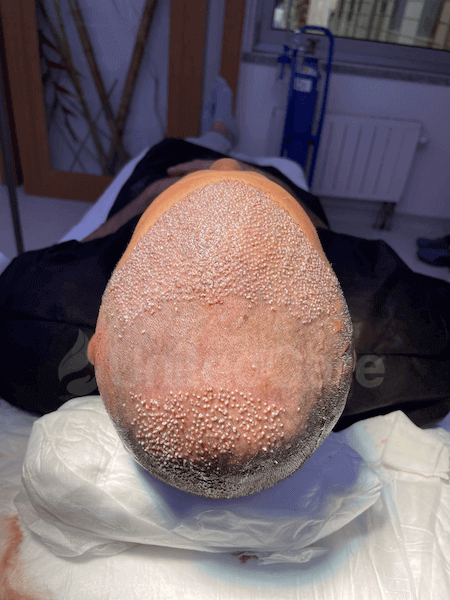
Hair Transplant Trypophobia Test
Below is a quick hair transplantation trypophobia test for you before you continue reading the rest of the article.
After the test, you can decide whether to read on or quit.
Keep in mind that even if you are not trypophobic, you may still get triggered by the photos below. That feeling is quite normal, and if your anxiety and stress levels are not increasing as you look at the pictures, you’re probably not hair transplant trypophobic.
Test Image 1

Test Image 2
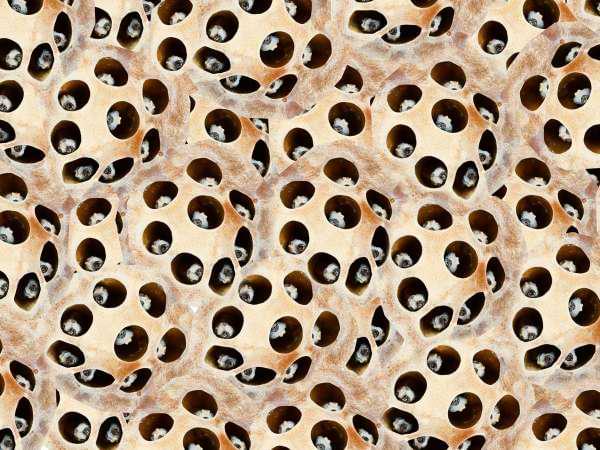
Test Image 3
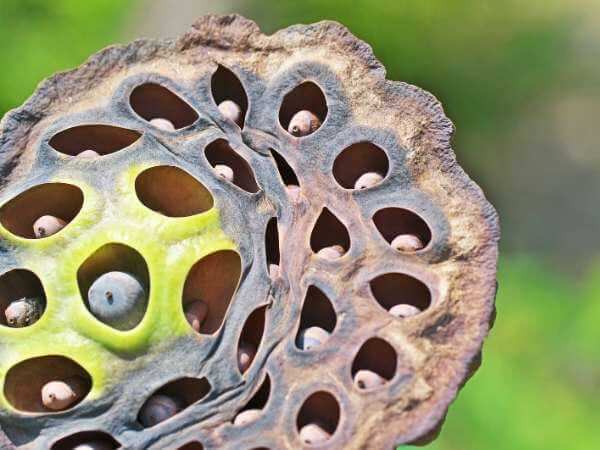
Test Image 4
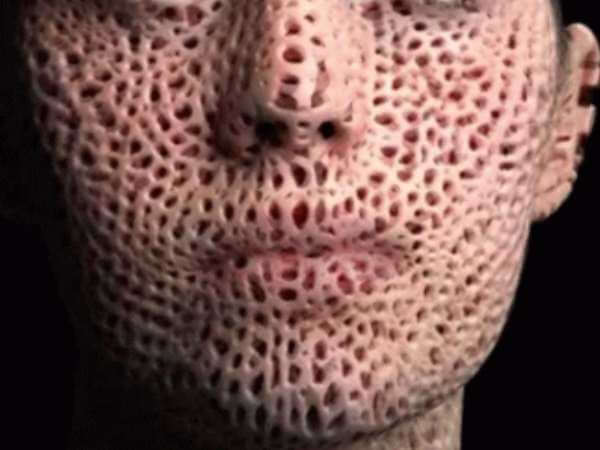
Do you feel ok? Continue accordingly👇
Hair Transplant Trypophobia Pictures
Here are some pictures related to hair transplant trypophobia I found. I guess the left one is from archives of ISHRS and shows a result of an outdated hair transplant technique. The right one is done with a modern technique, but the surgeon used an improper micro-punch.
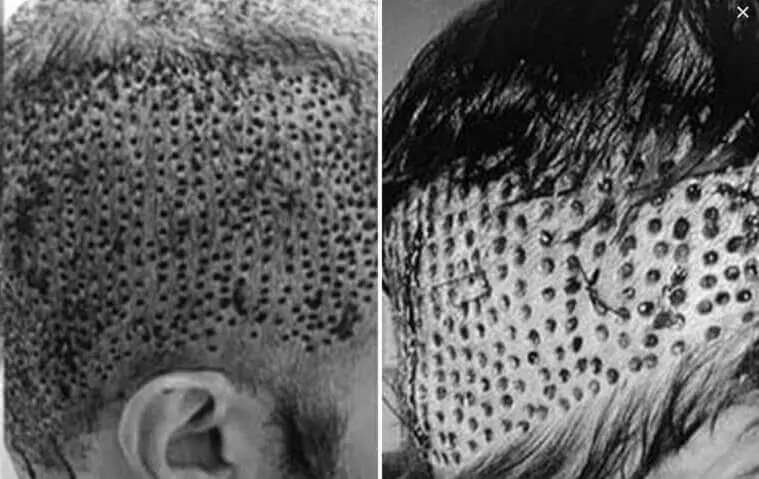
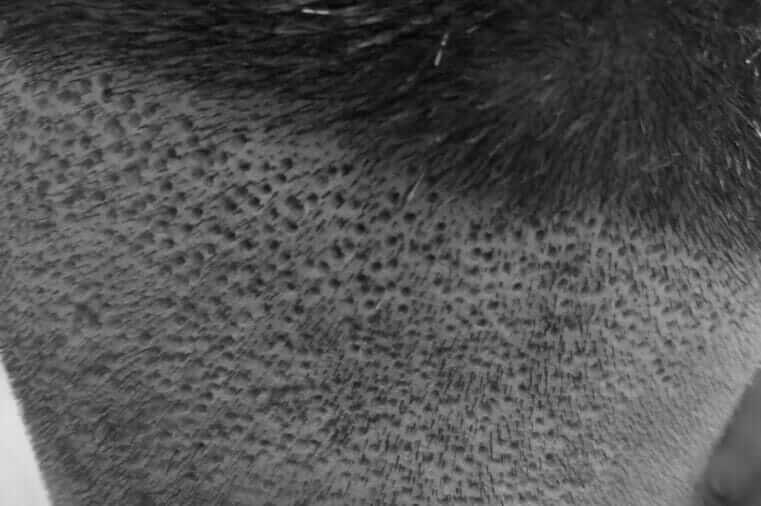
These are total DISASTERS and ULTIMATE HAIR TRANSPLANTATION FAILURES.
Unfortunately, many non-medicals (from taxi drivers to janitors) do these operations for $800 – $1000 packages, including hotel and transportation in Turkey. The outcomes are inevitably hair transplant failures.
This kind of hair transplantation will leave visible scars on your scalp (as seen in the picture below) and trigger not only trypophobics but also normal people.
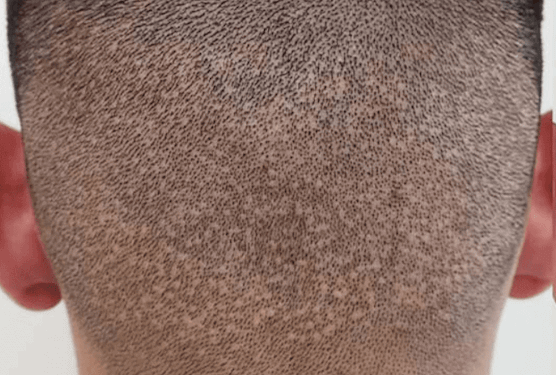
These aren’t what hair transplant holes usually look like; the size of the holes depends on what kind of punch tool the surgeon will use:
What determines the size of hair transplant holes?
Holes on the recipient and donor zone aren’t supposed to be as big as the pictures I’ve shared above.
Normally, they shouldn’t be larger than 1mm in even the most extreme cases.
The hole size depends on the hair transplant punch tool used, tips of these tools vary based on size and shape depending on your hair and skin type.
And the smaller the tip of the punch tool, the smaller the tip.
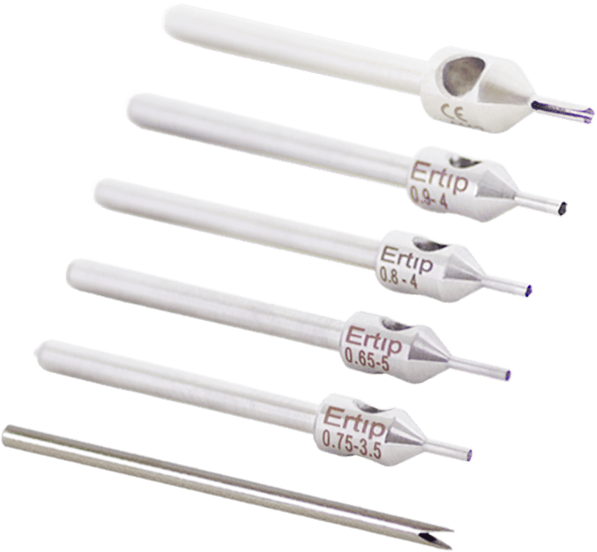
Can’t you just use a very small punch tool so there are no visible holes?
Unfortunately, the tip of a punch tool can’t go smaller.
The width of the punch tool should be a bit bigger than the width of your hair follicle so it can wrap around it and not amputate it.
If we try to use a smaller punch tool that can still wrap around the follicle but leaves smaller holes, the extracted follicles would have a higher chance of being damaged, so less success rate for your surgery.
What do holes following a proper hair transplant surgery look like?
If you are working with an experienced dermatologist surgeon, like the staff of UnitedCare, you can expect smaller holes that heal faster.
Let me share with you the progress of Ahmet, a recent hair transplant patient of mine:
Post-surgery
Ahmet had a 3500 graft FUE surgery; here’s what the donor and transplant area looked like right after the operation as we were injecting PRP into the transplant site:

As you can see, these holes are much smaller compared to the pics I’ve used before.
1 week after surgery
A week following the surgery, here’s what Ahmet’s scalp looked like. The transplant site almost healed, and the holes aren’t disturbing after seven days.

1 month after surgery
And here’s Ahmet 1 month after the surgery, both the donor area and transplant site completely healed, and there’s even hair growth occurring on the transplant site.
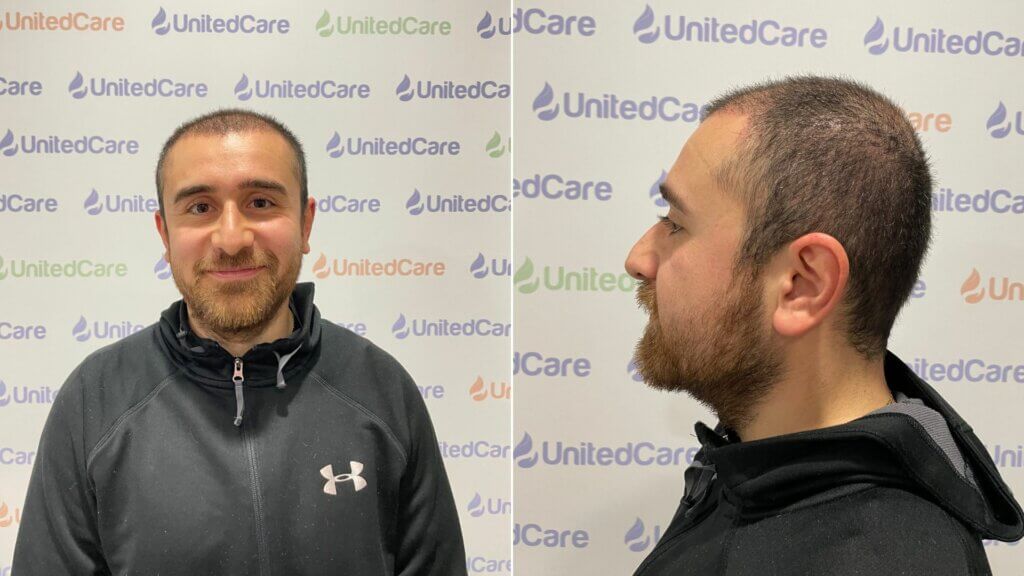
Extremely fast recovery like the one in the progression above is possible if:
- The right hair transplantation technique is used. (Sapphire FUE, DHI)
- The minimum diameter micro-punch is used.
- The donor area is not overharvested or seriously damaged. (causes inflammation and scars)
- The recipient area is not overloaded, and existing follicles are not damaged. (might cause tissue rejection and death of healthy hair follicles)
- A patient is provided with detailed post-operative instructions and high-quality post-op care products. (shampoo, lotions, etc.)
- A patient properly followed post-operative instructions.
Since the tiny holes will be there for a couple of days, it will be much easier to handle stress and discomfort.
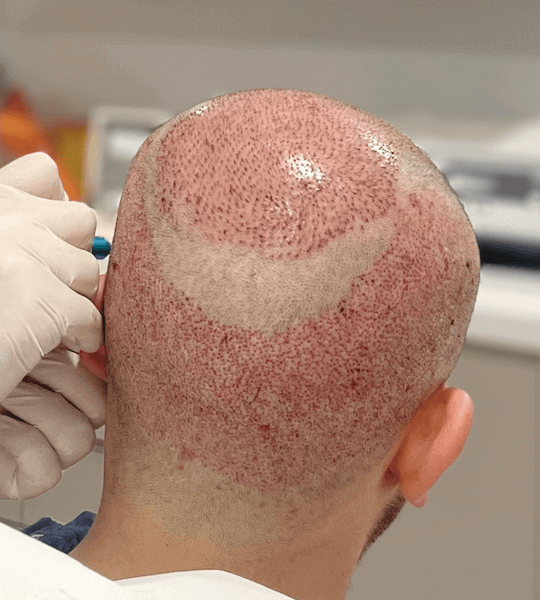
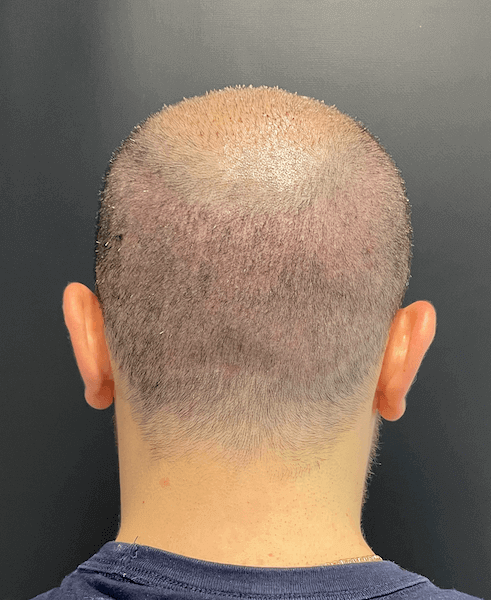
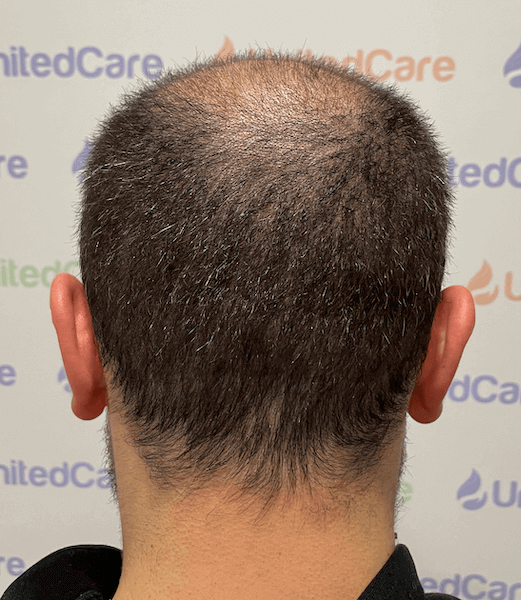
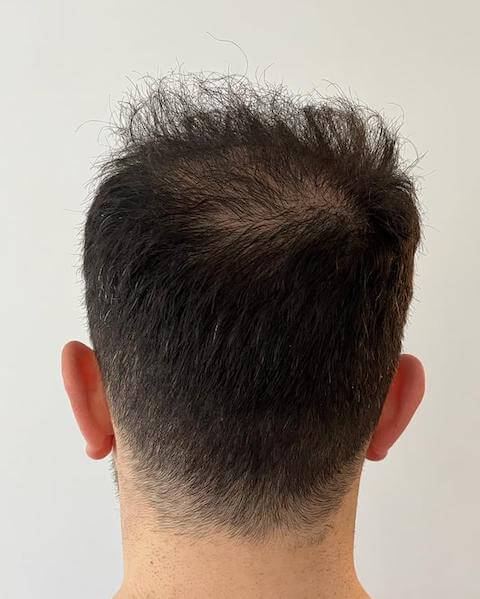
How can you ensure that your hair transplant is 100% successful?
Trypophobia, fear of holes, already affects your daily life. And you may think it also prevents you from restoring your natural look with hair restoration surgery.
You are not alone; many others have different phobias against surgeries, such as tomophobia (fear of surgical operations), hemophobia (fear of blood), trypanophobia (fear of needles), etc.
At the end of the day, the benefits far outweigh the fear and discomfort when you comb your new hair in front of the mirror without hair loss, anxiety, stress, and low self-image.
Therefore, you can have a hair transplant trypophobia and still restore your natural look with hair restoration surgery.
To manage the hair transplant trypophobia, there are 4 things you can focus on achieving:
1️⃣ An experienced surgeon and proper clinic
Knowing that your doctor has a high success rate and does almost perfect daily operations is pretty relaxing. Don’t cut the hair transplant cost while finding the doctor, especially if you have a hair transplant trypophobia.
If your clinic is low-cost and does not involve a dermatologist in operation, very large diameter punches might be used without considering the hair type and thickness (curly, straight, very thin, extremely thick, and hard).
These large punches help them to complete the operation in less time and move on to the next patient in the “hair mill.” They spend less time on your operation, reduce the cost, and earn more by doing an extreme number of patients daily.
However, these large punches open bigger holes than expected.
A proper clinic and experienced surgeon will ensure that holes are as small as possible and disappear within days.
2️⃣ Education/Information
Do you know the psychological fact that the expectation of pain intensity affects the pain felt?
Expectations about future pain alter the perceived pain intensity to closer levels of expected intensity. If you believe a procedure will cause a little pain, it will probably cause less pain than it should.
Similarly, if you believe you can have the surgery and see tiny holes on the scalp as a normal thing that everybody does, it will normalize.
One of the most effective ways to overcome hair transplant phobia is to learn everything about the operation and gradually confront the fear in a safe and controlled environment.
You can find a responsive, transparent, attentive clinic and dermatologist surgeon who knows more than 3,000 skin, scalp, and hair conditions and learns everything you need to know about hair restoration surgery, leaving no room for a surprise. This way, the chance of triggering a hair transplant trypophobia will be much lower.
At UnitedCare, we love to inform our prospects about hair transplantation in UnitedCare and Turkey. Feel free to ask us anything you want:
Overcome the fear of hair transplant.
Restore your natural look with professional help.
3️⃣ Meditation/Stress Management
Although you may still experience a phobic reaction, meditating before facing the situation can make your symptoms less severe. It may help you stay free of unhelpful fears.
Meditation could make you more relaxed and tranquil in your mind. During meditation, you focus on the moment and eliminate thoughts that crowd your mind and cause stress. It calms not only the mind but also the body.
According to a meta-analytic review:
Mindfulness-based therapy is a promising intervention for treating anxiety and mood problems in clinical populations.
Thus, meditating before undergoing hair transplant surgery can make you feel less discomfort and fear.
In addition, a close relative or friend you trust may help manage stress and keep you calm during the operation. When your focus is away from your fears, symptoms disappear.
Keep in mind that medical staff is dealing with numerous patients having a variety of fears/phobias every day. They can improve the technical skills they acquired in universities with daily practice.
Thus, they will be pretty helpful in keeping you calm and will accompany you throughout the experience.
4️⃣ Medications
Sedation
Normally, hair transplant operations are done under local anesthesia with a needleless dermojet.
If a patient has a phobia, an anesthesiologist can be involved in the surgery and give sedation. When it kicks in, a patient feels relaxation and drowsiness and does not feel pain.
Also, negative emotions, stress, or anxiety gradually disappear.
⚠️ Sedation should only be done by an anesthesiologist who can adjust the proper dose. Always ask the profession of the medical personnel trying to give sedation. Otherwise, a patient may have a heart attack, pneumonia, or stroke with the wrong dose.
Beta-Blockers
They reduce blood pressure, safely slow down the heart, and reduce stress and anxiety. It gives hair transplant trypophobic patients relief throughout the operation.
Beta-blockers may have side effects, such as sleep problems and cold fingers. A healthcare professional should decide on its use.
Anti-anxiety (Anxiolytic) Drugs
Anxiolytics are used to treat anxiety and excessive worry. They are effective in getting rid of hair transplant trypophobia symptoms.
Some of them are alprazolam (Xanax), chlordiazepoxide (Librium), clonazepam (Klonopin), and diazepam (Valium).
They are also referred to as an alternative to sedation in medical procedures.
Anxiolytics may cause drowsiness or dizziness as a side effect.
5️⃣ Hair Transplant Technique: FUT vs FUE for trypophobics
In FUE surgeries, tiny holes are opened with punches, which results in small dots that are healed in a couple of days. However, in this period (after bandages are removed) a patient may look at his head’s back out of curiosity and trigger a hair transplant trypophobic response.
To prevent that, FUT surgeries may be an option since hairs are taken out with a strip of skin leaving no temporary holes.
However, it might be like “out of the frying pan into the fire” since FUT stitches and scars left are serious because the FUT graft harvesting process includes taking a part of the skin with 1000 to 4000 grafts out of the scalp with surgical methods.
Can you overcome hair transplant trypophobia?
If you believe in yourself, YES, you can overcome it with the right conditions, environment, and support.
Finding an experienced clinic and surgeon, learning all the details about the procedure, employing meditation techniques, and using medications to relieve your discomfort and anxiety caused by hair transplant trypophobia.
With the experience of seeing thousands of cases, we are ready to help you handle the phobia and are just a click away:
We believe in you to overcome the fear.
Do you believe in yourself?
Frequently Asked Questions (FAQs)
Can You Go Bald After a Hair Transplant?
In the first months, it is normal to have a shock loss, and all transplanted hairs fall out. After this period, the hair growth cycle re-starts, and new hairs start to grow. The transplanted hair is more resistant to female and male pattern hair loss (AGA) because hairs on the sides and back of the head (donor site) are generally less sensitive to androgens.
How Can a Hair Transplant Go Wrong?
The average failure rate of hair transplants is 5%. In professional clinics, the rate is below 1%.
The failure reasons are:
- Overharvesting and leaving scars in the donor area.
- Damaging existing hair roots.
- Tissue rejection or inflammation in the recipient area.
- Very low graft survival rate due to improper techniques.
- Compilations that couldn’t be properly dealt with by non-medicals and nurses.
Is Hair Transplant Not for Hair Transplant Trypophobes?
No, they can have a hair transplant. With proper stress management and operation techniques, a patient overcomes the fear, undergoes hair restoration surgery, and returns to his daily routines in a week.
Is It Normal to Have a Hair Transplant Trypophobia?
Yes, it is normal, and you are not alone. The National Institute of Mental Health estimates that 12.5% of adults in the United States experience a phobia at some point. That is why we have various solutions for this condition so that people with trypophobia can have hair transplants as well.
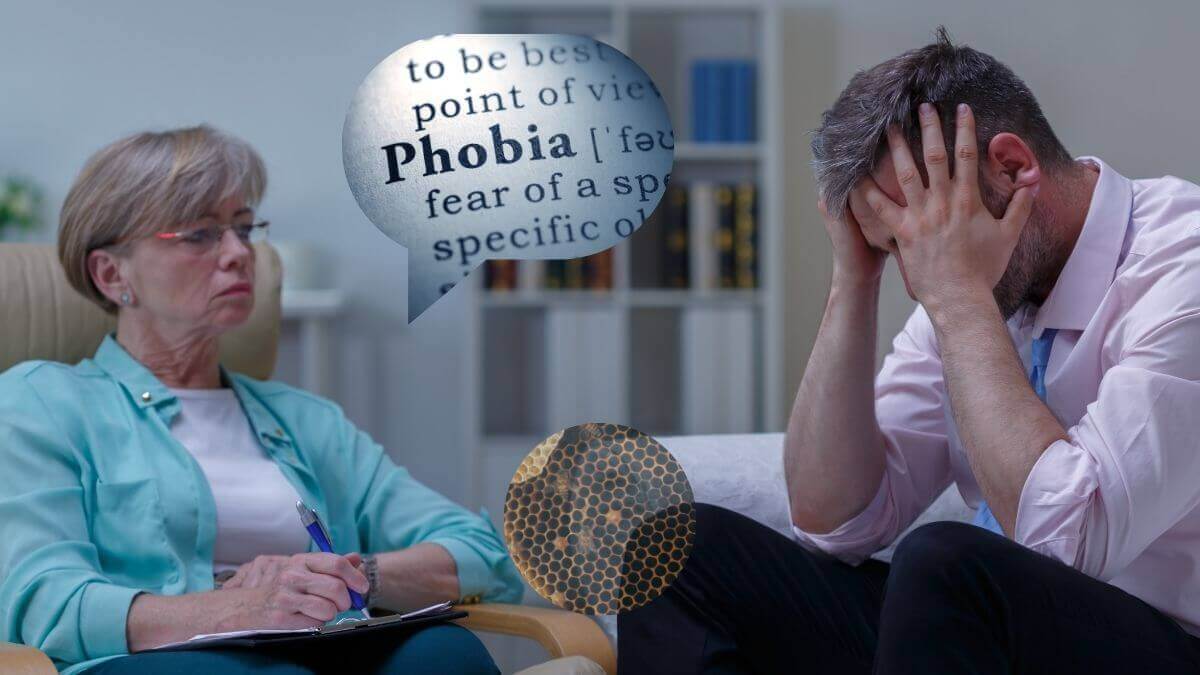

bookmarked!!, I really like your website!
Hello Humberto,
Thank you for your kind words, and glad you liked the post.
Best wishes 🍀